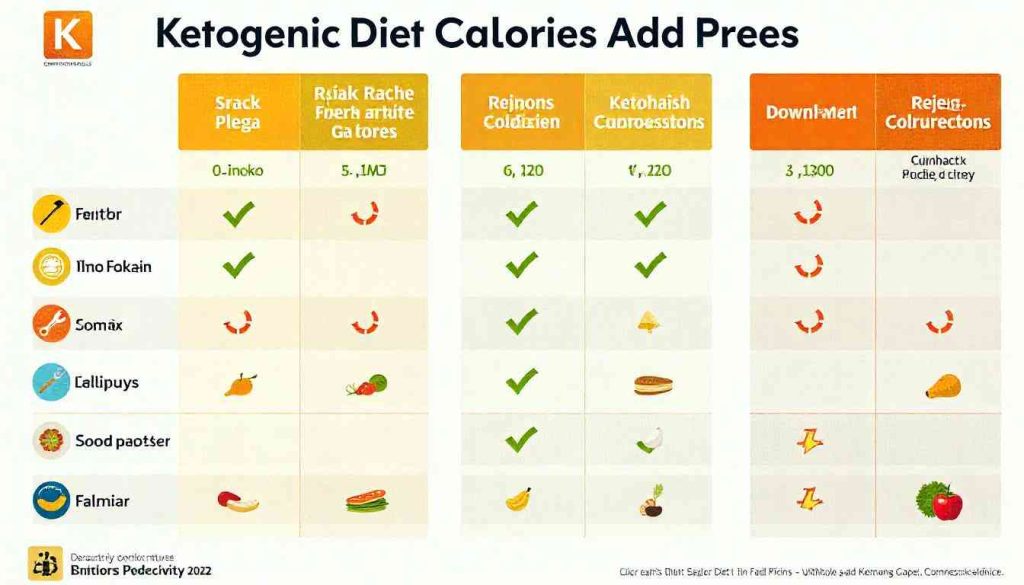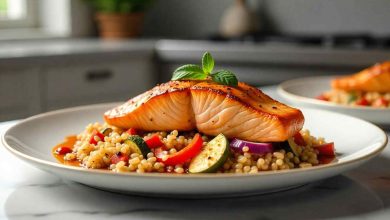How Many Calories Should You Eat on a Keto Diet? Complete 2025 Guide for Weight Loss and Health
How Many Calories Should You Eat on a Keto Diet?
Introduction: Calories Still Matter on Keto
The keto diet is known for its high-fat, low-carb approach, forcing the body into a state of ketosis, where it burns fat for fuel instead of carbohydrates. But a common question persists:
👉 “Do calories matter on a keto diet?”
The short answer: Yes. While keto changes how your body processes energy, the number of calories you consume still plays a major role in whether you lose, gain, or maintain weight.
In this guide, we’ll break down exactly how many calories you should eat on a keto diet based on your goals, how to calculate your needs, and tips for staying within your ideal range without obsessing over every bite.
Why Calories Still Count on Keto
Although keto naturally suppresses appetite for many people, calories remain the foundation of weight management. No matter how few carbs you eat, consuming more calories than you burn will eventually lead to weight gain.
Here’s the science:
-
1 pound of fat = roughly 3,500 calories
-
A calorie deficit leads to fat loss
-
A calorie surplus leads to fat gain
Keto might make it easier to achieve a deficit due to reduced cravings, but the math of energy balance still applies.
Step-by-Step: How to Calculate Your Keto Calories
Step 1: Estimate Your Total Daily Energy Expenditure (TDEE)
Your TDEE is the number of calories your body burns in a day, including exercise and daily movement.
Use a calculator or this simplified method:
TDEE = BMR x Activity Level
BMR (Basal Metabolic Rate):
Estimate using this quick formula:
-
Men:
10 × weight (kg) + 6.25 × height (cm) − 5 × age + 5 -
Women:
10 × weight (kg) + 6.25 × height (cm) − 5 × age − 161
Activity Multipliers:
-
Sedentary (little or no exercise): 1.2
-
Light activity (1–3 days/week): 1.375
-
Moderate (3–5 days/week): 1.55
-
Very active (6–7 days/week): 1.725
💡 Example:
-
30-year-old woman, 65 kg, 165 cm, light activity:
-
BMR = 10×65 + 6.25×165 − 5×30 − 161 = 1376.25
-
TDEE ≈ 1376.25 × 1.375 = 1892 kcal/day
-
Step 2: Adjust for Your Goal
-
Fat loss: TDEE – 15% to 25%
-
Maintenance: TDEE (no adjustment)
-
Muscle gain: TDEE + 10% to 20%
📌 Continuing our example:
-
For fat loss: 1892 × 0.80 = ~1513 kcal/day
Ideal Keto Macronutrient Breakdown
Keto isn’t just about calories—it’s also about macronutrients (fats, proteins, carbs). Here’s a standard keto macro split:
-
70–75% fat
-
20–25% protein
-
5–10% carbs
Let’s apply that to a 1500-calorie keto diet:
| Macro | % of Calories | Grams per Day |
|---|---|---|
| Fat | 70% (1050 kcal) | ~117 grams |
| Protein | 25% (375 kcal) | ~94 grams |
| Carbs | 5% (75 kcal) | ~18 grams |
✅ Remember:
-
1 gram fat = 9 calories
-
1 gram protein/carbs = 4 calories
Do You Have to Count Calories on Keto?
Not necessarily—but it helps.
Many keto beginners lose weight without counting because they feel full on high-fat meals and cut out processed snacks. However, if you hit a weight loss plateau, calorie tracking can reveal hidden overeating.
Best approach:
-
Track your calories for the first 2–4 weeks
-
Learn your appetite and portion sizes
-
Use tools like MyFitnessPal or Carb Manager
Special Considerations for Calorie Needs
1. Active Lifestyle
If you lift weights or do cardio, your calorie needs increase. Keto athletes may need extra protein to prevent muscle loss, even if it nudges carbs slightly higher.
2. Women on Keto
Women may see better results on moderate keto with slightly more carbs (30–50g/day) and slightly fewer fats. Hormones, cycle phases, and thyroid health matter—so be flexible.
3. Older Adults
Over 50? You likely need fewer calories but more nutrient-dense foods to maintain muscle and energy. Focus on protein and healthy fats like salmon, olive oil, and eggs.
Sample Calorie Ranges for Keto
Here’s a quick reference for daily calorie targets based on goals and gender (average adult):
| Goal | Men (avg) | Women (avg) |
|---|---|---|
| Fat Loss | 1600–2000 | 1300–1700 |
| Maintenance | 2200–2500 | 1800–2100 |
| Muscle Gain | 2600–3000 | 2000–2300 |
Note: These are general guidelines. Always personalize your numbers based on your TDEE.
Tips to Stay Within Keto Calories Without Feeling Hungry
-
Fill up on fiber: Leafy greens, broccoli, and cauliflower add volume without carbs.
-
Prioritize protein: Eggs, chicken, salmon help keep you full longer.
-
Use healthy fats strategically: Olive oil, avocado, nuts, and ghee are calorie-dense—use them mindfully.
-
Drink water: Dehydration can mimic hunger.
-
Limit keto snacks: “Fat bombs” and packaged treats are easy to overeat.
Common Calorie Mistakes on Keto
❌ Overeating fat: More fat doesn’t mean more fat-burning. You still need a deficit.
❌ Too much dairy or nuts: High in calories, low in volume—easy to overdo.
❌ Avoiding veggies: Fiber-rich vegetables are crucial for digestion and don’t ruin ketosis.
❌ Thinking calories don’t matter: Keto is not a magic pass to eat unlimited food.
Final Thoughts: Find Your Keto Calorie Sweet Spot
While the keto diet is effective for fat loss, calorie control is still key. Whether your goal is to slim down, build muscle, or simply feel better, calculating your ideal calorie intake ensures you’re not guessing—you’re progressing.
✅ Determine your TDEE
✅ Adjust for your goal
✅ Keep macros in balance
✅ Re-evaluate every 4–6 weeks
With the right calorie target, keto becomes not just a trend—but a sustainable lifestyle.




